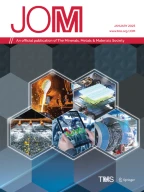Abstract
A framework for adopting machine learning is presented for both analysis and design of microlattices, which can be fabricated using additive manufacturing techniques. Building on graph autoencoders in the deep learning realm, a learning algorithm is designed within an encoder and a decoder (autoencoder), which are responsible for analysis and design of microlattice architectures, respectively. Microlattices are generated by a compact genetic algorithm, and their corresponding mechanical properties are obtained by finite-element analysis. The training dataset consists of 2500 microlattices. The autoencoder is trained in a supervised manner with the graph representation of the generated microlattices. The encoder component learns to infer the mechanical properties of a microlattice as latent variables in the form of force–displacement characteristics, whereas the decoder component is presented with desired mechanical properties as inputs and creates a corresponding microlattice. The decoder is able to generate microlattices from the desired mechanical properties. The decoder-generated microlattices are in good agreement with the original ones within and/or without the training dataset. The ability of the encoder to capture more complex mapping, from microlattice architectures to performance metrics, can be improved by adding more graph convolutional layers to the encoder, i.e., producing deeper networks.
Similar content being viewed by others
References
T. DebRoy, T. Mukherjee, J.O. Milewski, J.W. Elmer, B. Ribic, J.J. Blecher, and W. Zhang, Nat. Mater. 18, 1026 (2019).
M.G. Rashed, M. Ashraf, R.A.W. Mines, and P.J. Hazell, Mater. Des. 95, 518 (2016).
S. Russell and P. Norvig, Artificial Intelligence: A Modern Approach, 3rd ed. (Upper Saddle River: Pearson, 2009).
S.O. Haykin, Neural Networks and Learning Machines, 3rd ed. (New York: Pearson, 2008).
Y. Tang, G. Dong, Q. Zhou, Y.F. Zhao, and I.E.E.E. Trans, Autom. Sci. Eng. 15, 1546 (2017).
G. Dong, Y. Tang, and Y.F. Zhao, J. Mech. Des. 139, 100906 (2017).
M. Mohsenizadeh, F. Gasbarri, M. Munther, A. Beheshti, and K. Davami, Mater. Des. 139, 521 (2018).
D.W. Abueidda, I. Jasiuk, and N.A. Sobh, Mater. Des. 145, 20 (2018).
J. Robbins, S.J. Owen, B.W. Clark, and T.E. Voth, Addit. Manuf. 12, 296 (2016).
M. Helou and S. Kara, Int. J. Comput. Integr. Manuf. 31, 243 (2018).
D.S. Nguyen, F. Vignat, in 2016 IEEE International Conference on Industrial Engineering and Engineering Management (IEEM) (2016), pp. 966–970.
D. Mahmoud and M.A. Elbestawi, J. Manuf. Mater. Process. 1, 13 (2017).
J. Feng, J. Fu, Z. Lin, C. Shang, and B. Li, Visual Comput. Ind. Biomed. Art 1, 5 (2018).
V.S. Deshpande, M.F. Ashby, and N.A. Fleck, Acta Mater. 49, 1035 (2001).
T.A. Schaedler and W.B. Carter, Annu. Rev. Mater. Res. 46, 187 (2016).
J. Souza, A. Großmann, and C. Mittelstedt, Addit. Manuf. 23, 53 (2018).
L. Cheng, P. Zhang, E. Biyikli, J. Bai, J. Robbins, and A. To, Rapid Prototyp. J. 23, 660 (2017).
K. Liu and A. Tovar, Struct. Multidiscip. Optim. 50, 1175 (2014).
D. Chen, M. Skouras, B. Zhu, and W. Matusik, Sci. Adv. 4, eaao7005 (2018).
H. Liu, Y. Hu, B. Zhu, W. Matusik, and E. Sifakis, ACM Trans. Graph. 37, 2511 (2018).
G.R. Harik, F.G. Lobo, D.E. Goldberg, in 1998 IEEE International Conference on Evolutionary Computation Proceedings. IEEE World Congress on Computational Intelligence (Cat. No.98TH8360) (1998), pp. 523–528.
S. Tang, H. Jin, C. Fang, Z. Wang, V.R. de Sa, in 6th International Conference on Learning Representations (2018).
I. Goodfellow, Y. Bengio, and A. Courville, Deep Learning (Cambridge, MA: The MIT Press, 2016).
L. Le, A. Patterson, and M. White, Advances in Neural Information Processing Systems 31, ed. S. Bengio, H. Wallach, H. Larochelle, K. Grauman, N. Cesa-Bianchi, and R. Garnett (Red Hook: Curran Associates Inc, 2018), pp. 107–117.
T.N. Kipf, M. Welling, arXiv:1611.07308 [Cs, Stat] (2016).
T.N. Kipf, M. Welling, arXiv:1609.02907 [Cs, Stat] (2016).
M. Defferrard, X. Bresson, and P. Vandergheynst, Advances in Neural Information Processing Systems 29, ed. D.D. Lee, M. Sugiyama, U.V. Luxburg, I. Guyon, and R. Garnett (Red Hook: Curran Associates Inc, 2016), pp. 3844–3852.
M. Fatemi, P. Setoodeh, and S. Haykin, J. Complex Netw. 5, 433 (2017).
J. Tallon, E. Cyr, A. Lloyd, and M. Mohammadi, Eng. Fail. Anal. 108, 104231 (2019).
N. Després, E. Cyr, and M. Mohammadi, Proc. IMechE 233, 1814 (2019).
E. Cyr, A. Lloyd, and M. Mohammadi, J. Manuf. Process. 35, 289 (2018).
D.P. Kingma, J. Ba, arXiv:1412.6980 [Cs] (2014).
X. Glorot, Y. Bengio, in Proceedings of the Thirteenth International Conference on Artificial Intelligence and Statistics (2010), pp. 249–256.
Acknowledgements
The authors thank Natural Sciences and Engineering Research Council of Canada (NSERC) Grant No. RGPIN-2016-04221, New Brunswick Innovation Foundation (NBIF) Grant No. RIF2017-071, Atlantic Canada Opportunities Agency (ACOA)-Atlantic Innovation Fund (AIF) Project No. 210414, and Mitacs Accelerate Program Grant No. IT10669 for providing sufficient funding to execute this work. E.C. thanks The McCain Foundation for providing enough funding through The McCain Foundation Postdoctoral Fellowship in Innovation program to conduct this work. P.S. thanks The Harrison McCain Foundation for providing enough funding through The Harrison McCain Visiting Professorship program to conduct this work.
Author information
Authors and Affiliations
Corresponding author
Additional information
Publisher's Note
Springer Nature remains neutral with regard to jurisdictional claims in published maps and institutional affiliations.
Rights and permissions
About this article
Cite this article
Després, N., Cyr, E., Setoodeh, P. et al. Deep Learning and Design for Additive Manufacturing: A Framework for Microlattice Architecture. JOM 72, 2408–2418 (2020). https://doi.org/10.1007/s11837-020-04131-6
Received:
Accepted:
Published:
Issue Date:
DOI: https://doi.org/10.1007/s11837-020-04131-6
